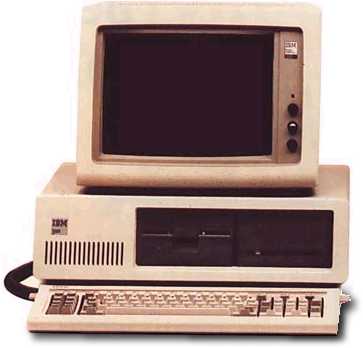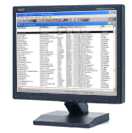About Us
 AIRPAC was started in 1981 prior to the introduction of the IBM PC. Our
first aviation software program for managing Aviation Databases was implemented
on an Altos system under the MP/M (a multi-user version of CP/M) operating system.
This computer was at the leading edge of technology with the ability to support
three simultaneous users with video terminals. Each user had a whopping 64K
(that's 65,536 bytes) of RAM.
AIRPAC was started in 1981 prior to the introduction of the IBM PC. Our
first aviation software program for managing Aviation Databases was implemented
on an Altos system under the MP/M (a multi-user version of CP/M) operating system.
This computer was at the leading edge of technology with the ability to support
three simultaneous users with video terminals. Each user had a whopping 64K
(that's 65,536 bytes) of RAM.
It didn't take long after the release of the IBM PC for us to realize
 we needed to jump on-board. So we completely redesigned our software to run
on the MS-DOS operating system on IBM PC/XT/AT computers.
we needed to jump on-board. So we completely redesigned our software to run
on the MS-DOS operating system on IBM PC/XT/AT computers.
As systems became more powerful, we continually changed and re-designed our software to keep up with faster computers, more RAM, and increased hard disk capacity.
In 1992, Microsoft released Windows Version 3.1, the first graphical interface that was both widely accepted and easy to program. We soon released The AIRPAC Data Manager™ with the ability to search, add, update, and print aviation information. This was our first product to support unlimited file sizes - our customers had the ability to store the entire U.S. Aircraft Registry and Pilot databases - nearly 1,000,000 records - on their computers.
 In November, 1994, we added the ability to create our own CD's with all
aviation databases. At the time, it took over an hour to create a single
CD, a blank cd cost $20.00, and the recording process would fail often.
In November, 1994, we added the ability to create our own CD's with all
aviation databases. At the time, it took over an hour to create a single
CD, a blank cd cost $20.00, and the recording process would fail often.
Once again, we redesigned the software and produced The AIRPAC Plane CD™, designed specifically to handle large volumes of data on a single CD.
In 2009, we completely redesigned the Plane CD software and released the AIRPAC PlaneBase™ software. While we retained the core functionality of the Plane CD™ software, PlaneBase™ added many new features plus access to all our mailing list databases. Click Here to learn more about PlaneBase™
We have been providing the Aviation Industry with information, systems
and services since 1981 and you can count on us to provide the most
 comprehensive and up-to-date systems and databases in the industry.
To learn how we have improved our databases, go to our
Data Improvements page.
comprehensive and up-to-date systems and databases in the industry.
To learn how we have improved our databases, go to our
Data Improvements page.

